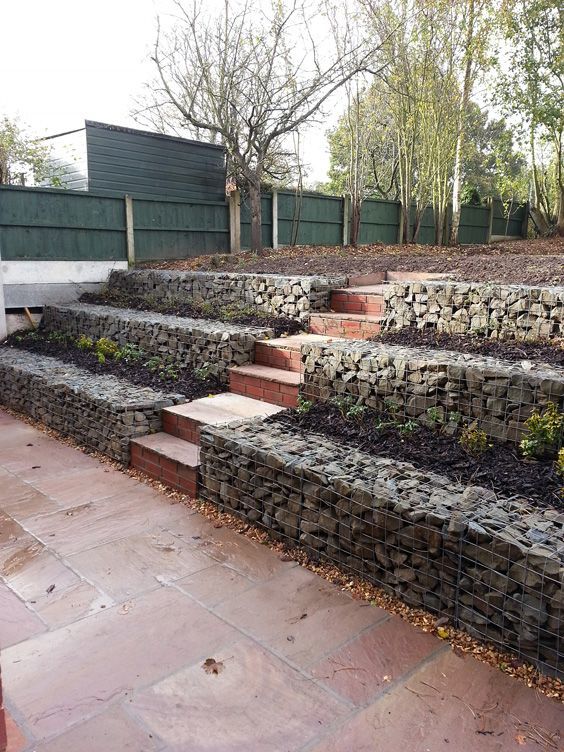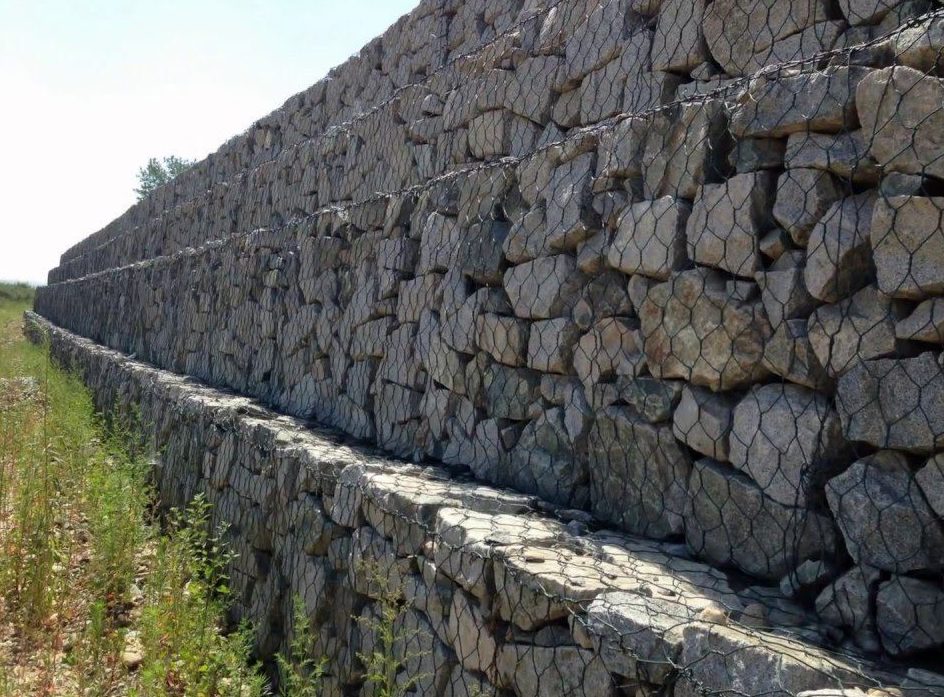Some technologies last longer than others.
Gabion Baskets—where stones are contained within metal mesh-like netting and used as walls or stabilisers—have existed for thousands of years.
Today we will look at how you can use Gabion Baskets to retain a sloping block or build a complete wall.
They are great for features and can even be used as a foundation for that outbuilding you were thinking of.
But first, here’s a quick history lesson on Gabion Baskets!
More...
Gabian Baskets
There is evidence of these stone-filled, woven-reed baskets constructed along Egypt’s Nile River to stabilise its banks up to 7,000 years ago. The word Gabion comes from the Italian word Gabione, which means "Big Cage." Military and structural engineers have used it for thousands of years.
Our Gabions provide an attractive, effective, and inexpensive retaining wall system. The best thing about them is that anyone can build a gabion retaining wall that will stand the test of time.
So if you’ve ever found yourself asking how to make gabion baskets, you’ve come to the right place.
How Can Gabion Baskets Be Used?
Walls are probably the most familiar Gabion application.
There are many effective gabion retaining wall designs to choose from which is why they have become one of landscape designers' favourite additions to any garden.
Heights of gabion retaining walls can vary from high privacy and windbreak walls to low single layers, visually marking boundaries. Other ways you could use them are cladding on existing walls, benches, steps, feature walls, erosion control, garden sculpture and furniture, outdoor ovens and fire pits, vegetation edging, retaining/support structures, and pool and water-feature surrounds.
Why Use A Gabion Baskets?
Well, firstly they look great and secondly, gabion baskets price is very attractive.
The pleasing aesthetics of Gabions have long been admired and to use them around the home is both easy and cost-effective. Not only do landscape designers and home-owners alike love the low gabion retaining wall costs, but there are also many more reasons to keep in mind:
Easy installation and built-in strength:
The stone fill settles to the contours of the ground beneath it and possesses such frictional strength that it does not need a foundation. The wall’s strength and effectiveness may increase with time, as silt and vegetation fill the voids and reinforce the structure. Another advantage over more rigid structures is that Gabions can conform to ground movement.
Sustainability:
Used as shade screens in hot climates, Gabion walls provide passive cooling; they allow air to move through, providing ventilation.
Environmental friendliness:
Using onsite material as filler eliminates transportation costs and associated fuel consumption.
Flexibility:
The ability to conform to settling and movement and the option, in many cases, to be moved to other locations.
Superior sound-dampening qualities:
This is especially true if sandbags are installed in the centre. As well as their good exterior acoustics, Gabions also have excellent insulation and fire-resistant properties.
Aesthetics:
Gabions look natural and can tie a house to the landscape by using filler materials excavated from the site or the local terrain. Galvanised steel and wire mesh can be utilised by landscape designers to achieve beautiful end-products.
Permeability:
Permeable and free-draining; it can’t be washed away by moving water. This makes them the best item to make a wall from. Allowing water to move through the wall and yet keeping the soil etc behind it is truly valuable in a garden environment.
Cost-effectiveness:
Low-labour requirements, easy installLow labouration, and no need (in many cases) for footings or support make them highly competitive cost-wise.
Long-lasting:
We start by using the Gabion Basket or Cage to hold the fill (that may be rocks, stones, pebbles) but by the time the cage breaks down (50 years or so) the contents will have settled and be very solid. All the little spaces in between the rocks fill up with dirt, sand and debris, therefore, making the wall a permanent thing.
What Can I Fill A Gabion Baskets With?
One of the most popular retaining wall materials to fill a gabion basket with is rocks. Allows quick fill-up time as the rocks are quite large and end up looking quite striking as the rocks have varied colours and shapes.
Also, it helps residential and commercial owners keep the gabion baskets price down.
Indeed, it is the most typical filler for its durability, longevity, and stability. Often the filler is chosen for its aesthetic attributes, or by what can be recycled from a site. Some considerations depend on a wall’s purpose.
For a retaining wall, the rock must be dense enough to support the load. Hard rock such as basalt is typical. Over time as the cracks fill up and become solidified this makes for an amazingly strong wall.
Stones or River Stones. Using smaller stones is great when you are trying to make the walls for decoration and not just for retaining. Moreover, the stones give it a much more refined look and allow you to customise it to suit your garden.
Pebbles. My favourite is to use pebbles. The smooth finish works well to lift the wall into a design feature without parallel. You may need to line the Gabion with a smaller mesh to hold some of the smaller pebbles in but it is well worth it.
N.B.: If you’re building a retaining wall, get a landscape architect or engineer to determine loads and stresses and other factors.
How Much Do Gabion Baskets Cost?
Prices can be as low as $60 for a Gabion Basket. Which you can fill with rocks, stones or pebbles from your own property. If you want to use our rocks, stones, or pebbles, we will add that cost to the price plus delivery.
Price can vary, depending on the size of the baskets:
The first thing to do is to choose what size hole you want in the basket. Our baskets come in the following hole sizes:
Small = 50mm x 50mm Medium = 75mm x 75mm Large = 100mm x 50mm
Then you can choose what size you want each basket to hold the filler.
Our smallest basket is 500 mm x 500 mm x 500 mm with a spacing between wire of 50 mm. You can also get this size in the 75mm x 75mm and the 100 mm x 50 mm hole sizes.
Next Up is 500 mm x 500 mm x 1000 mm
Lastly, just add on 1-meter or half-meter lots as needed.
Gabion Retaining Wall Cost
The Gabion Baskets cost very little for retaining walls or stone fencing since you don't need much excavation or land preparation.
One of our landscapers has said, “It looks like the clients dropped thousands of dollars, but because they often don’t require a foundation, it’s a very economical way to build a garden wall. Thus, the cost of labour is minimal compared to a traditional fieldstone wall for example.”
Can I Use A Gabion Basket For A Foundation?
Yes, Leonardo da Vinci designed similar structures, to fortify the foundations of Milan’s Castello Sforzesco in the 15th century.
In today's Rammed Earth and Cobb homes, builders often opt for what is called a French Foundation or Trench Foundation.
This is digging out a trench about two times the width of the wall you are going to build on it. You make the trench one foot lower than the freeze line (in Australia we often don't have a freeze line but if you do, go one foot lower) or around 1.5 metres deep and then fill with rocks and cap off with six inches of concrete.
Using the Gabion Baskets for this is an easy way to maintain uniformity and make it quick to do all the calculations. As opposed to using concrete blocks to get a full concrete foundation, this ends up being much cheaper with excellent anti-freeze bonuses. A trench foundation can support very heavy walls like rammed earth.
Thanks for tuning in. I hope this information is helpful to you.
Cheers,
Darren.












